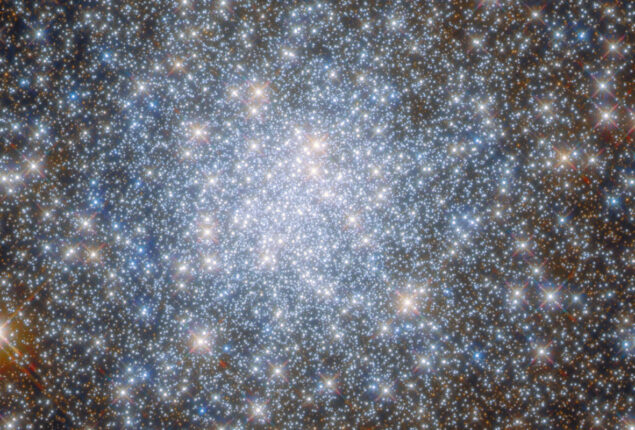Nasa converts black hole ‘light echoes’ to sound: Viral Video
Nasa's sonification posts are amazing to watch and can leave people speechless....

NASA Hubble Telescope Captures Open Star Cluster
The Hubble Space Telescope has caught a vivid image of an open star cluster in one of the Milky Way’s satellite galaxies. The telescope captured an enthralling cluster of stars known as NGC 1858 in an area rich in star-forming zones. NASA took to Instagram to reveal this gleaming sea of stars, which is tinged with blue, white, and intense orange light radiating from distant celestial entities.
The image depicts a vivid blue cloud against a backdrop of what appears to be an ocean of glistening stars. The size of the stars varies, demonstrating that while some are close to the telescope, others are many light years distant.
AdvertisementAdvertisementView this post on InstagramAdvertisementAdvertisementAdvertisementAdvertisement
Advertisement
Scientists estimate that this open star cluster is around 10 million years old. NASA disclosed in the post’s caption that the group is a complex collection since it contains stars at various stages of evolution. “The presence of an emission nebula suggests that star formation recently occurred here since the radiation required to ionise the gas of the nebula comes from stars that only live a short time,” NASA reported.
According to the space research organisation, the cluster, which is located in the northwest part of the Large Magellanic Cloud satellite galaxy, has an abundance of star-forming regions.
Because the gravitational interaction between the stars is relatively weak, the cluster has a unique structure. “This is an emission nebula, which is a cloud of interstellar gas that has been ionised by ultraviolet wavelengths radiating off nearby stars. The gas of the nebula emits its own light at visible wavelengths (as our eyes would see it), seen here as a faint cloud that populates the middle and bottom right of the image,” the caption continued.
Dorado, one of the 88 current constellations, contains NGC 1858. The cluster is approximately 160,000 light-years from Earth and is located in an active region of the sky.
Catch all the Sci-Tech News, Breaking News Event and Latest News Updates on The BOL News
Download The BOL News App to get the Daily News Update & Follow us on Google News.